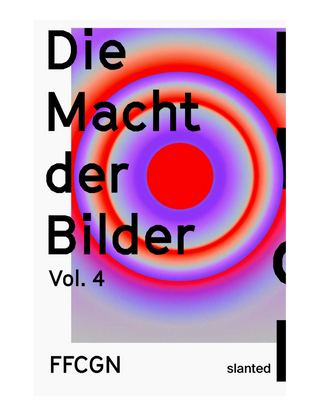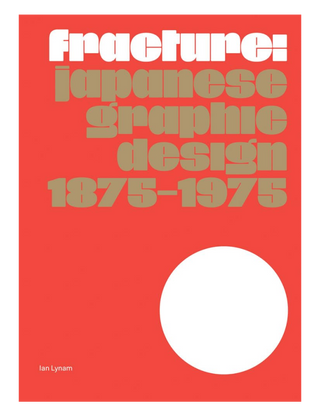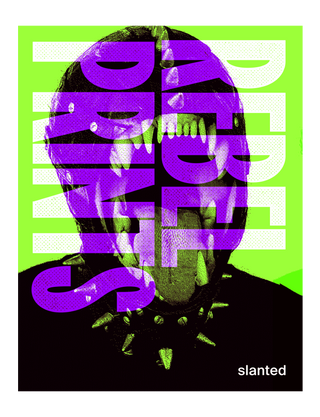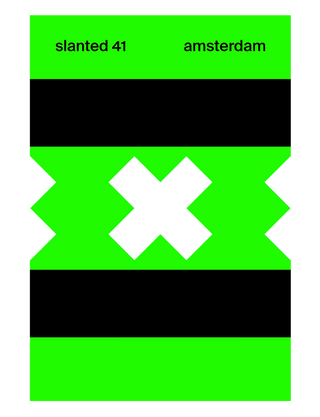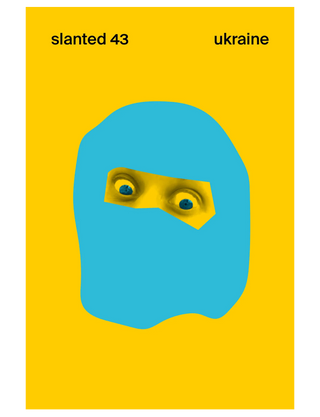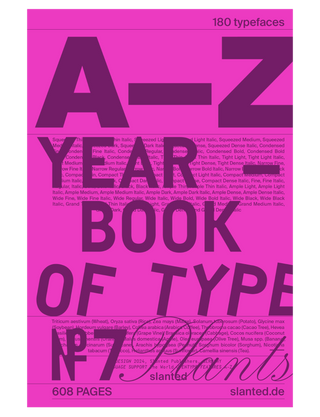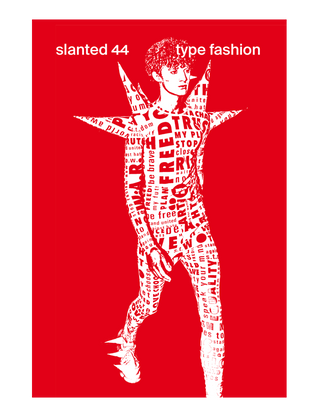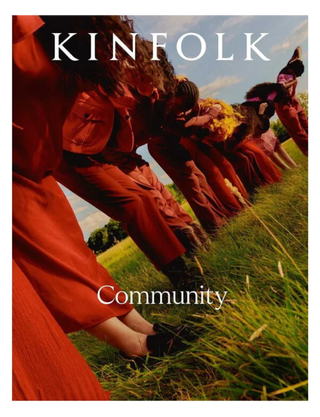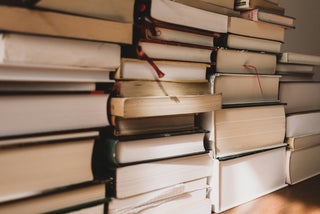Each of us has heard at least once that Ukrainian writers are not influential or relevant enough, and that Ukrainian literature is not as outstanding as others and is too full of suffering. These stereotypes have dominated society for a long time, but in recent years, the field of book publishing and culture has been increasingly debunking them. Let's try to figure out what lies behind such prejudices and what Ukrainian literature really is, and also see what is worth reading for those who are just starting to get to know Ukrainian authors.
"I will not call upon my fate with a rush": not with sadness alone
A superficial look at Ukrainian literature may lead to the impression that it can only evoke feelings of sadness and despair. However, even if you only walk through the works of the school curriculum, you can see
- and poetry, far from the tragedy or pathos of historical lyrics (from the contemplative poems of Antonych to the provocative and humorous experiments of Boo-Ba-Boo),
- and various manifestations of satire (from the social comedies of Karpenko-Kary to Vishna's sketches of smiles),
- and the adventure genre (from Nestaik's children's literature to Bagryany's "Tiger Hunters" ),
- and love stories (from classics like Frank to intimate lyrics by Zhadan ),
- and many other themes and styles.
See our catalog of Ukrainian literature to find what appeals to you
And if you go beyond the school curriculum, you can discover an incredible layer of works that demonstrate the full inclusion of Ukrainian literature in the European and global context .
For example, our authors of the 1920s not only reflected the processes of urbanization and social changes of that time ( “The City” by Podmogilny ), but also embodied experiments in various currents of modernism: they created intertextual intellectual prose (“Journey of the scientist Dr. Leonardo…” by Johansen ) or wrote formalist avant-garde poems (Semenko and other representatives of futurism). Writers of that time actively translated from other languages and subscribed to leading European publications about literature in order to understand world trends and form their unique perspective on popular currents.
In addition, thanks to the new editions of "non-canonical" works, you can learn a lot of interesting things, for example:
- We had the first "travel blogger" back in the 1930s. Sofia Yablonska destroyed all possible patterns when she (a single woman!) went to exotic countries like Morocco, China or Laos. She recorded her impressions in photographs, as well as travel notes, the editions of which quickly became bestsellers.
- Nobel Laureate Heinrich Böll tried to initiate the awarding of the Nobel Prize to Stus (or at least supported such an initiative). In 1984, an International Committee was created in Toronto, which recommended Stus for the prize, and several German writers appealed to the General Secretary of the Central Committee with a direct demand to release the writer from the camp. It is quite possible that the activity of the community contributed to the death of Stus, because such a Nobel initiative was not profitable for the Soviet authorities.
- The Chernobyl disaster left its mark on Ukrainian postmodernism, leading to original experiments with the novel form. For example, in "The Daily Wand", Pashkovsky marks both the time and the space of the novel with the Chernobyl trauma: he depicts a concrete city that becomes dangerous for life, and "Chernobyl timelessness" in which Ukrainians are suspended.
- Despite the ideological pressure, the Ukrainian "lost generation" left its powerful testimonies about the war and the post-war period. Unfortunately, many Ukrainian writers did not live to see the post-war era due to repression, and those who wanted to be published had to bend to the Soviet ideology. Despite this, we have the works of Yanovsky, Bagryany, Lepky, Dovzhenko and other authors, which reveal the crisis of the "lost generation" that is trying to adapt to a new life. Writers often focus on the younger generation, which is still looking for a zest for life.
Ukrainian writers of the 20th century: works that should be on every bookshelf
So if you are interested in what to read from Ukrainian literature , start with the works of the last century, which will impress you with their relevance and stylistic diversity:
- Valerian Pidmohylyny's "City" : the first Ukrainian urban novel is experiencing a renaissance, finding a new audience in Ukraine and abroad (in recent years it has been translated and published in Czech, German and Polish)
- "Master of the Ship" by Yuri Yanovsky : a fascinating novel about the behind-the-scenes work at a film studio
- Marusya Bohuslavka. " Circle of Fire " by Ivan Bagryany: the first and last parts of the unfinished epic about Ukrainian youth during the Second World War
- Iryna Wilde's trilogy "Butterflies on hairpins" : lively, playful prose depicting the life of Ukrainian youth in the interwar period
- A collection of poetry by Vasyl Stus "Sky. Crooked Chasm. Water” : here are collected not only poems, but also translations, letters and other texts of one of the most versatile Ukrainian poets
- Collection of short prose "Crazy Female Authors" : a great opportunity to briefly familiarize yourself with the most iconic writers, to form a general idea of the dynamics of women's writing in our literature and to find those that impress you the most
When did it all begin, who started Ukrainian literature and which writers played the biggest role?
Although we have the largest selection of works from the 20th century and modern times, you can learn about Ukrainian literature by diving much deeper into the past.
Ukrainian medieval literature and Hryhoriy Skovoroda
Conversations about what literature in the Ukrainian language is can be started from the time of Kyivan Rus. The first works in the ancient Ukrainian language that have come down to us date back to the 11th century (Sviatoslav's Collections). These are collections of church instructions and various curiosities, which are translated from the Bulgarian text, but at the same time have pronounced features of the ancient Ukrainian language.
From the 14th-15th centuries, the flourishing of ancient Ukrainian literature begins, culminating in the Baroque era. Numerous chronicles, apocrypha, pilgrimage works are written and distributed; polemical literature explodes under the influence of church reforms; for the first time, literature is formed that does not have a practical purpose, but is a purely artistic expression (for example, the work of Pavel Rusyn from Krosno and other poetry).
The indisputable pinnacle of ancient Ukrainian literature is Hryhoriy Skovoroda , who combined the book, Church Slavonic language with the folk Old Ukrainian and wrote in various genres: from instructive fables and poems to philosophical dialogues and treatises. None of his works were published during his lifetime, but this did not prevent Skovoroda from gaining popularity among the literate population: his works were copied and circulated throughout Ukraine, becoming models for many later literary geniuses, including Shevchenko .
The Renaissance and Ivan Kotlyarevskyi
But no matter how influential (and still relevant!) Skovoroda was, the father of Ukrainian literature written in the living Ukrainian language was Ivan Kotlyarevskyi. It was the "Aeneid" of 1798 that marked a new milestone in the history of Ukrainian literature .
This poem is special in many ways: it is a satirical take on a classic ancient plot. "Aeneas was a motor boy. And the boy is a Cossack at least somewhere, He succeeded in everything wickedly agile, The most zealous of all burlak" - the poem embodies the maximum diversity of the lexicon and phraseology of that time. But in addition to linguistic richness, "Aeneid" can also be perceived as an encyclopedia of Ukrainian ethnography. This work paved the way for the new Ukrainian literature, which became more and more accessible and understandable to the general population.
Realism and literature of the 19th century are beyond rural themes
During the 19th century, despite numerous repressions and prohibitions by Russia and other empires, a realistic tradition was formed in Ukrainian literature, historical works were written, and lesser-known genres appeared, for example, mystical prose ("Married Devil" by Oleksa Storozhenko or "Rozha" by Natalia Kobrynskaya).
The established canon of contemporary works is often perceived in the context of the stereotype of Ukrainian literature, which does not go beyond rural. But if you look closely, writers even then depicted the life of different strata of the population (for example, in Nechuy-Levytskyi's "Clouds" the focus of attention is on the intelligentsia), and also went beyond everyday issues into the philosophical plane ("Moses" by Franko and other works) and even wrote children's texts about Ukrainians striving to overcome the invading empire and restore dependence ("Marusya" by Mark Vovchka became popular even in France).
Which Ukrainian authors are read today and who is known on the international scene?
In recent years, there has been a growing interest among Ukrainians in their literature and in reading in general (for example, according to the Ministry of Culture , in 2024, 17% of surveyed Ukrainians said that they read every day, which is twice as much as in 2020). In bookstores, the works of Ukrainian classics, modern Ukrainian poetry, and texts related to the history of Ukraine are in great demand: for example, in the bookstore "E" in 2023, Bagryany's books were bought 12 times more often than in 2021. The modern literary process has matured to the point that poets are gathering stadiums and the first real bestsellers are appearing ("I see, you are interested in the dark" by Pavliuka crossed the mark of 100,000 sales ).
Interest in Ukrainian writers is also growing abroad. In 2021, there was a jump to more than 120 published translations, and in 2022, foreigners bought the rights to more than 230 Ukrainian works . Kurkov, Zhadan and Zabuzhko can be named among the writers who are most actively published abroad. Both fiction and non-fiction are translated into foreign languages .
Are you looking for something to interest your foreign friends? View a selection of books about Ukraine in English , as well as gift editions about Ukraine
Russia's war against Ukraine increased the demand for texts about the war, as well as for poetry, which gives the author(s) a medium to quickly express timely emotions.
If you want to understand what modern Ukrainian literature is called and what is currently happening in the literary process, we advise you to pay attention to the following books:
- "Ask Miechka" by Evgenia Kuznetsova: a light and pleasant novel about sisters who run away from their city problems and come to the village for the summer to rethink their relationship and prepare for important decisions
- A collection of poems by Serhiy Zhadan : one and a half thousand pages of Zhadan's poems to create a complete picture of our most famous modern poet
- "(In)visible" by Ivan Baidak: an artistic story about otherness, based on real stories, a frank confession about how people with certain characteristics, such as vitiligo or Tourette's syndrome, live their everyday life, where not everyone is ready to accept them
- "After Prose" by Yuriy Izdryk: a selection of poems written by the author over the past 20 years, which include melancholy and existential reflections against the background of current events
- "Because it is so..." by Taras Prokhask: a selection of the writer's favorite short prose texts, built according to the special structure of a water clock in order to convey to readers the appropriate sense of time
- "Radio Night" by Yury Andruhovych: in this "acoustic novel" according to the author's definition, which combines elements of many styles, the main character leads his lyrical narrative, immersing himself in his own memories and thoughts, while at the same time playing music on the night radio and talking to listeners
- "District D" by Artem Cech: as in most of his texts, Cech turns to locations and people from his childhood and captures the past of his neighborhood through 16 short stories
- "A Little Ukrainian Novel" by Andrii Lyubka : the author satirizes the image of the poet-gulvis popular in world literature and brings the level of banter almost to the point of absurdity
- Hilarion Pavliuk's Dance of the Fool : A lesser-known text by Pavliuk that should appeal to his audience and fans of classic science fiction
Read Ukrainian now, "so that these words do not wither like ores"
The more we discover Ukrainian literature for ourselves, the more clearly we understand how much remains unknown, and the more acutely we realize how the stereotypes imposed on us prevented us from paying attention to the diversity of Ukrainian authors.
Thanks to new editions like the "Non-Canonical Canon" by Vyhola, you can discover dozens of names that go beyond established ideas about the classics, as well as many styles and ideas that completely shatter prejudices about Ukrainian literature as the literature of suffering or the Seleucids.
Of course, our history is full of tragic events, and often literature "cannot be read without bromine", as Vynnychenko said about Ukrainian history. Despite this, we always had enough of life-affirming stories, humor, and artistic experiments. It is only necessary to reject the colonial vision of one's literature as "lesser" or "worse" and perceive it as an equal participant in world processes.
And considering how often our literature was banned and how many writers were repressed, it is worth treating modern authors with special interest. This will make it possible to timely evaluate the important stories of our time and remember them. "So that these words do not wither like ores," as Lina Kostenko wrote.



